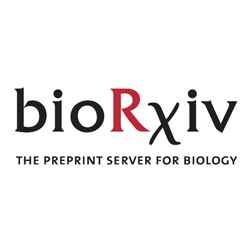
Yi Fu
@Yi__Fu
Followers
236
Following
1K
Media
18
Statuses
158
Postdoc at Shendure lab | PhD at Sfeir lab | mitochondrial DNA & more
Seattle, WA
Joined January 2011
I would also like to thank all other co-authors Roshan, @ChaligneRonan, Ignas, Rahul, Meril, Daphne, and @MarcoTigano for your generous help! Last but not least, none of this will be possible without @AgnelSfeir support and guidance along the way. 19/19.
0
0
2
This work is a collaborative effort between our lab (@TKavlashvili @edebitet Toby), and @themaxland from @dana_peer lab and SAIL team, Ruobing and Keun from Craig Thompson lab, and @minsoo_kim1 from @EdReznik lab, whom I enjoyed working with and have learned so much from! 18/19.
1
0
4
Finally, with help from @TKavlashvili and @edebitet, we demonstrated the flexibility of this method by engineering different types of mtDNA deletions (and even insertions) using site-specific nucleases and in iPSCs. 16/19.
1
0
2
With @themaxland spearheading the analysis of single cell data, we made a few interesting observations on mitochondrial and nuclear gene expression. 12/19.
1
0
2
We are not the first to come up with the idea. This approach has been used elegantly in Drosophila to study mtDNA deletions in the flight muscle 6/19.
nature.com
Nature Communications - Heteroplasmy, in which mutant and wild-type mitochondrial DNA (mtDNA) coexist in a cell, can result in diseases. Here the authors generate transgenic flies with...
1
0
2
Excited to share my PhD work in @Agnelsfeir’s lab describing a method to engineer mitochondrial DNA deletions in human cells and our exploration of how cellular metabolism and transcription respond to deletion heteroplasmy. 1/19.
biorxiv.org
Recent breakthroughs in the genetic manipulation of mitochondrial DNA (mtDNA) have enabled the precise introduction of base substitutions and the effective removal of genomes carrying harmful...
4
17
74







